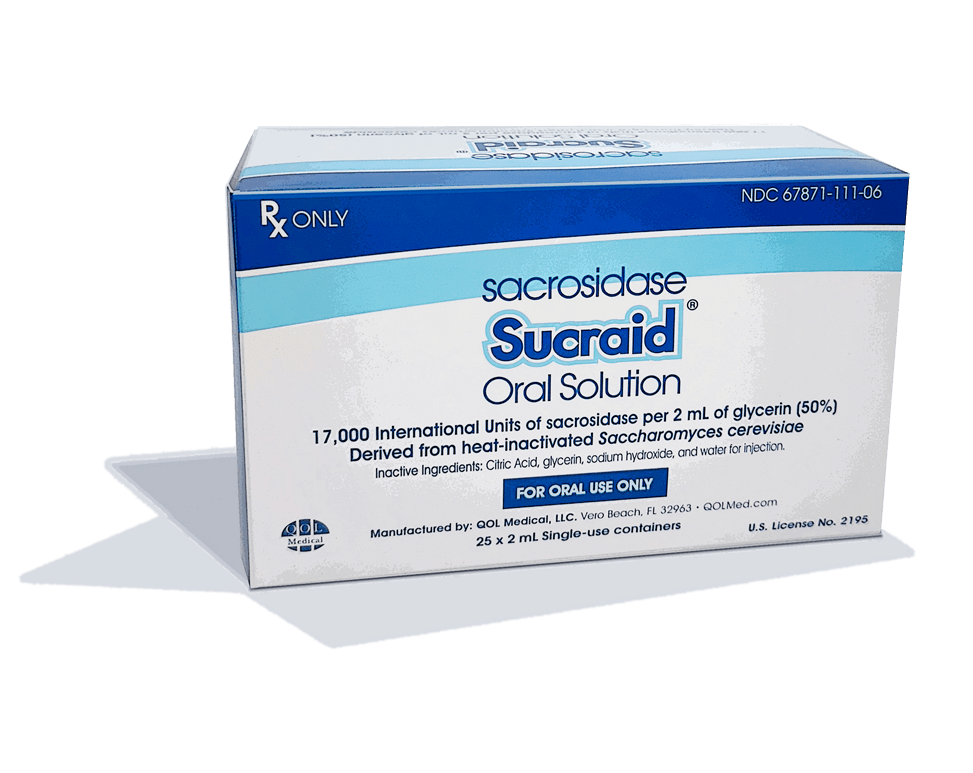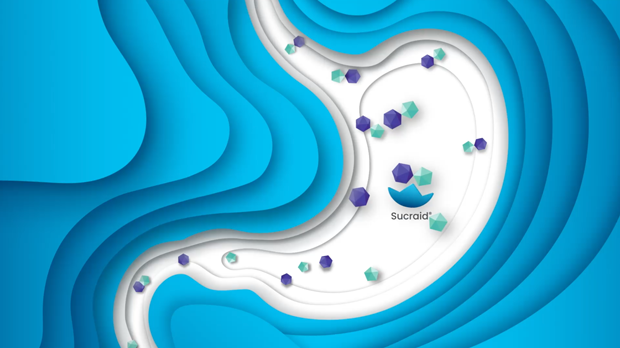About Sucraid®
What is Sucraid®?
Sucraid® is the only FDA-approved enzyme replacement therapy indicated for the treatment of sucrase deficiency, which is part of congenital sucrase-isomaltase deficiency (CSID), in adult and pediatric patients 5 months of age and older.
In This Section
Sucraid® is an enzyme replacement therapy that facilitates the breakdown of sucrose (sugar) into monosaccharides for absorption by the small intestine. It has been shown to help alleviate the gastrointestinal (GI) symptoms associated with CSID, and, as a result, patients can maintain a more normal diet that includes sucrose-containing foods.
Sucraid® is provided as a liquid to be mixed in cold or room temperature water, milk, or infant formula with each dose taken partly before and then during meals or snacks. Please refer to the Prescribing Information and Instructions for Use for full dosing instructions.

Figure 1. How Sucraid® is dispensed
How Does Sucraid® Work?
Sucraid® has been shown in clinical trials to be effective in the treatment of patients with CSID. The active ingredient in Sucraid® is sacrosidase, a sucrase enzyme replacement that catalyzes the hydrolysis of sucrose into glucose and fructose, thereby facilitating absorption from the small intestine into the bloodstream. Sacrosidase is a potent and robust enzyme; on a per milliliter basis, sacrosidase is approximately 100-fold more potent than endogenous sucrase.1 It has been shown to be stable when stored at 4°C.2
Although Sucraid® provides replacement therapy for deficient sucrase, it does not provide specific replacement therapy for deficient isomaltase.3 Therefore, Sucraid® does not metabolize dietary starches (for example, potato, bread, or pasta) and restricting starch in the diet may still be necessary to minimize symptoms in patients with CSID who are starch intolerant. When starting therapy with Sucraid®, patients who still have symptoms are advised to restrict dietary starch for two weeks and then gradually reintroduce starch while monitoring for gastrointestinal symptoms. Keeping a dietary diary for the first few weeks of therapy is also recommended.

Figure 2. Role of Sucraid® in the metabolism of sucrose and absorption of its metabolic byproducts glucose and fructose across small intestine microvilli
References
- Treem WR, McAdams L, Stanford L, Kastoff G, Justinich C, Hyams J. Sacrosidase therapy for Congenital Sucrase-Isomaltase Deficiency. J Pediatr Gatroenterol Nutr. 1999;28(2):137-142. doi:10.1097/00005176-199902000-00008
- Treem WR, Ahsan N, Sullivan B, et al. Evaluation of liquid yeast-derived sucrase enzyme replacement in patients with sucrase-isomaltase deficiency. Gatroenterology. 1993;105(4):1061-1068. doi:10.1016/0016-5085(93)90950-h
- Sucraid® [package insert]. Vero Beach, FL: QOL Medical, LLC; 2024.



